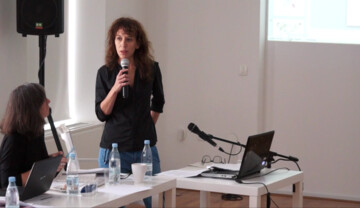This is the third geopolitical crisis that has cast a pall over the Middle East. The first began with the collapse of the Ottoman Empire. The second followed World War II, when the European colonial order turned to dust. The third crisis will reach its apex with the weakening of the American order and the increased influence of Iran and Russia, as well as other Arab and Western powers, generating yet more political disarray. The key features of the emergent crisis of Middle East geopolitics are foreign incursions, failed states policies, humiliated peoples, extreme inequality and poverty, plundered natural resources, ethnic conflicts, violence, and religious radicalism.
Since 9/11, Walter Benjamin’s apocalyptic tone of the 1930s has returned to relevance as a political theory. Given the religious dimension of US foreign policy that spawned the chaos in the Middle East, it is hardly surprising that → interest in religion and the theological structures of modernity has surged since 2001. The Bush administration’s foreign policy for the Middle East was aimed at more than preventing attacks on US soil. It was Bush’s self-declared goal to fight against the “axis of evil”, and his “mission” was to become the commander-in-chief in the global war on terrorism. In doing so, his definition of US responsibility was to “defend the future of all mankind” – a claim that could seem like a messianic delirium.
The intersection of political and theological concepts, what Carl Schmitt called political theology, is gaining momentum in the contemporary theoretical debate on the nature of human sovereignty and its propensity to generate catastrophic violence. Abravanel, Hobbes and Schmitt situated the potential catastrophe on the horizon, sometime in the future, in order to make use of it in the present as a tool for consolidating and intensifying collective consciousness, and for defending the political body and the sovereignty of the state. Nowadays, policymakers understand that by means of maintaining, sustaining and managing the prospect of a potential catastrophe, they can preserve the collective political consciousness of the states they rule, and use fear as the last adhesive that preserves the unity of the national political entity.
Disregard for the deep relations between catastrophe and human sovereignty can only perpetuate the acceptance of a supreme power. Adi Ophir points out the paradoxical ways in which the modern state perceives the place of the deity in both causing and dealing with major catastrophes, either abandoning the victims or saving them. At the same time, he reveals the continuing presence of the theological dimension in contemporary political frameworks that seem to be totally secular.
The relations between divine and earthly economies of violence underwent a significant transformation with the emergence of the modern state and its consolidation as a totality (of spaces, people, associations, etc.), a multi-apparatus that strives to control everything it contains and to contain everything it can control. On the one hand, the state has become a potential or actual generator and facilitator of large-scale disasters, and the destructive power of some states has been brought to perfection. On the other hand, the state has also become a facilitator, sponsor, and coordinator of assistance, relief and survival in times of disaster. In both cases, the state has taken, or might seem to be taking his role as the chief author of destruction and the ultimate agent of providence.[1]
The questions to be asked here are as follows: Is the state the bastion of human rationality against the excesses of religious radicalism, or are the two concepts complementary? Does the state’s secular foundation support a globalised violence that competes with, but is not qualitatively different from, the brutality of the theological regimes in conflict with it?
With this in mind, it is interesting to examine the tragedy that occurred this week in Saudi Arabia, with the collapse of a crane that killed at least 107 and injured 238 in the Grand Mosque in Mecca. Major General Suleiman Al-Amr, director-general of Saudi Arabia’s civil defence authority, told Saudi television that a storm with severe rain and wind speeds as high as 83 kph caused the crane to collapse.[2] Pilgrims from around the world had been converging on the city and the mosque for the annual Hajj pilgrimage, which started on 21 September. What caused this catastrophe? A natural disaster, the monarchy’s failure or divine violence?




